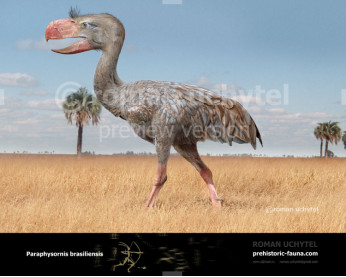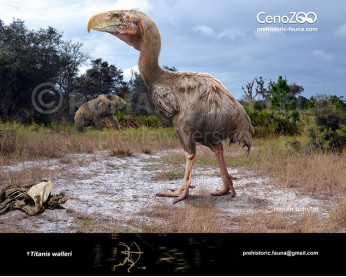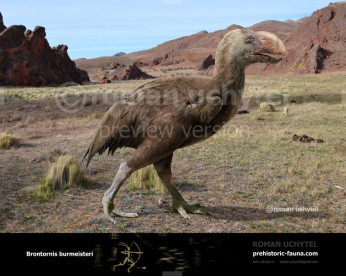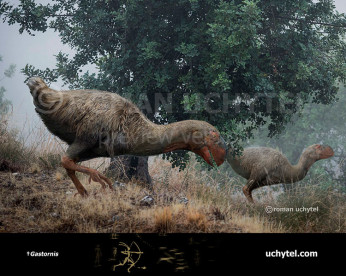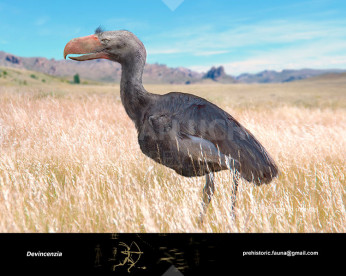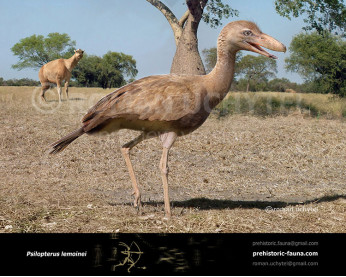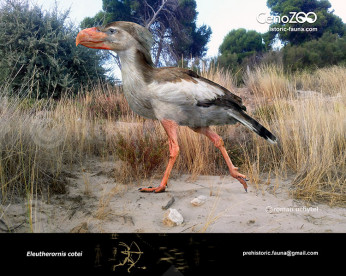Kelenken guillermoi
2323Kelenken guillermoi (Kelenken Bertelli et al., 2007)
Class: Aves
Order: Cariamiformes
Family: Phorusrhacidae
Time period: lived in the Langhian stage of the Miocene, some 15 million years ago, in Argentina (South America)
Size: 250 cm in height, 150 - 250 kg of weight
Typical representative: Kelenken guillermoi
Kelenken is an extinct genus of giant flightless predatory birds of the family Phorusrhacidae or "terror birds". These birds lived in the Middle Miocene, some 15 million years ago, in Argentina along with Argentavis. Kelenken was one of the largest carnivorous birds of all time, possibly reaching 2.28 to 2,5 meters tall and weighing around 250 kg. It was a large, flightless carnivore which probably chased down and killed its prey with several bone-shattering blows from its beak. Another possibility is that it may have picked up its prey item, then proceeded to shake it vigorously to break its back, or simply deliver a fatal bite from its massive beak.
With a skull 71 cm long (including its 45.7 cm beak), it had the largest head of any known bird. The tarsometatarsus was about 45 cm long.
Kelenken guillermoi (Kelenken Bertelli et al., 2007)
Class: Aves
Order: Cariamiformes
Family: Phorusrhacidae
Time period: lived in the Langhian stage of the Miocene, some 15 million years ago, in Argentina (South America)
Size: 250 cm in height, 150 - 250 kg of weight
Typical representative: Kelenken guillermoi
Kelenken is an extinct genus of giant flightless predatory birds of the family Phorusrhacidae or "terror birds". These birds lived in the Middle Miocene, some 15 million years ago, in Argentina along with Argentavis. Kelenken was one of the largest carnivorous birds of all time, possibly reaching 2.28 to 2,5 meters tall and weighing around 250 kg. It was a large, flightless carnivore which probably chased down and killed its prey with several bone-shattering blows from its beak. Another possibility is that it may have picked up its prey item, then proceeded to shake it vigorously to break its back, or simply deliver a fatal bite from its massive beak.
With a skull 71 cm long (including its 45.7 cm beak), it had the largest head of any known bird. The tarsometatarsus was about 45 cm long.

-walking-797x638.jpg)
-walking1-797x638.jpg)
-797x638.jpg)
2-797x638.jpg)
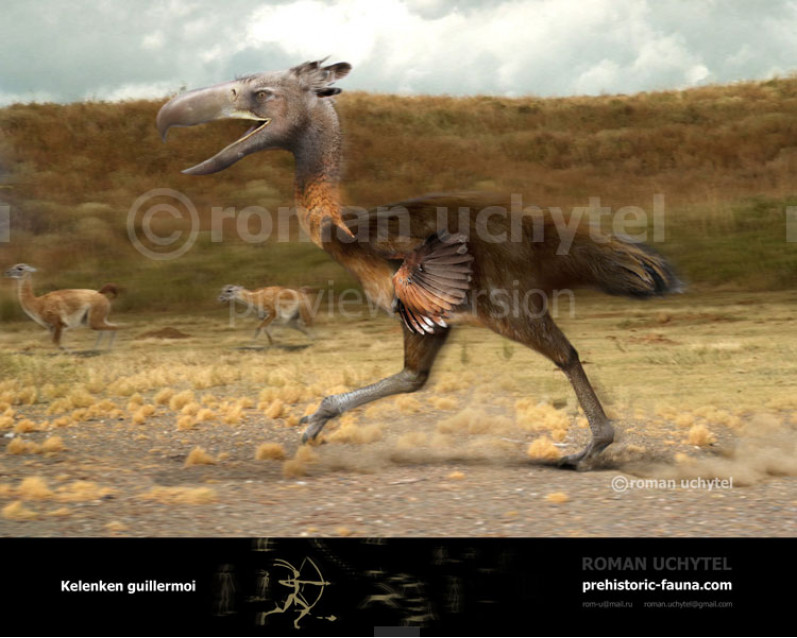
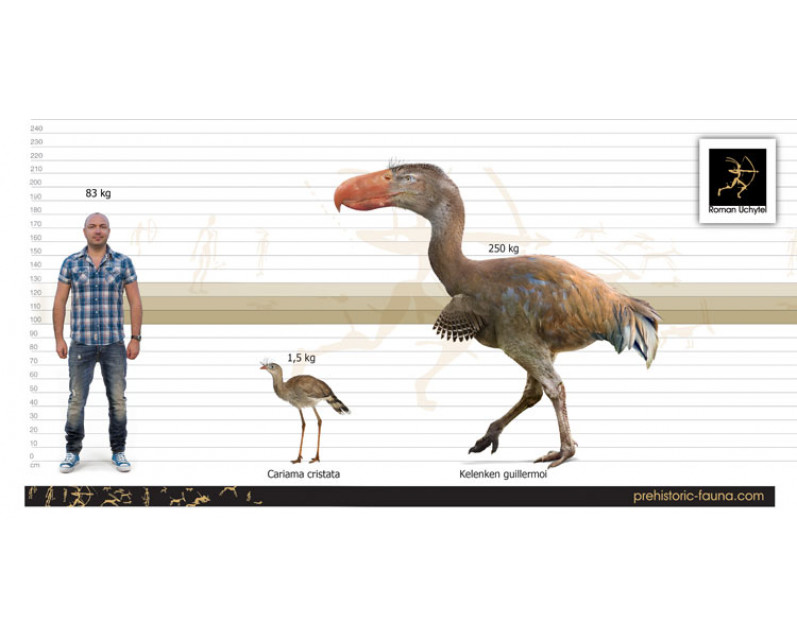
-walking-70x56.jpg)
-walking1-70x56.jpg)
-70x56.jpg)
2-70x56.jpg)


